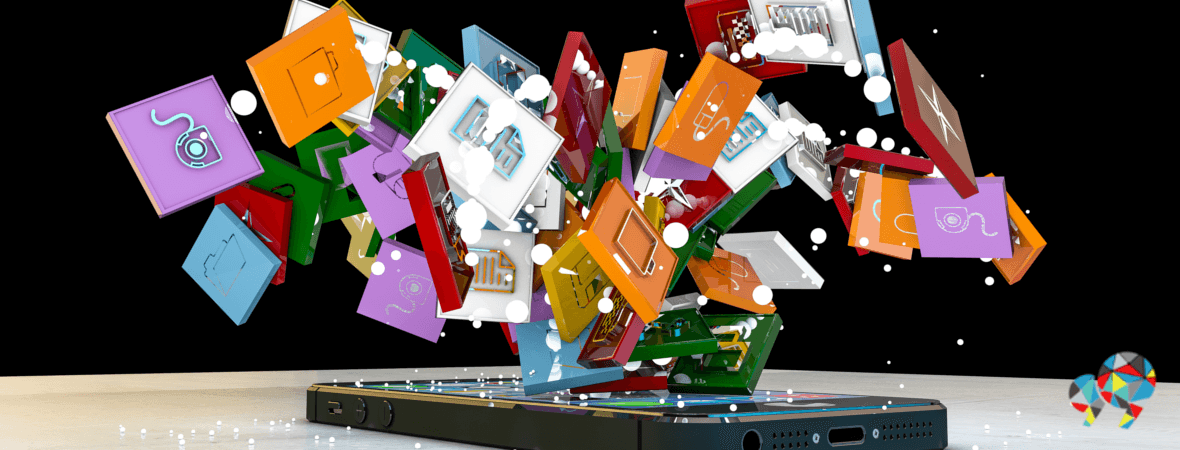
Growing your mobile app use
There are quite literally millions of apps out there on the market today. In fact, there are well over a million apps in Apple’s App Store alone. If you combine that with Google’s Play, we’re looking at over 2.5 million.
It’s Raining Apps. Hallelujah it’s Raining Apps!
Indeed, it’s raining apps. And now, we’re flooded. The issue for developers and businesses that want to make apps, is how to stick out from the crowd, when the crowd is so extraordinarily big.
Yep, people download apps like they’re going out of fashion. Especially if something’s free, people will generally try it out if you put it under their nose. Check out Yo, for example. It’s an app that does nothing except send a message that will only say, yo. We’re swimming in apps. Some useful. Some Yo.
The bad news is that despite how willing people are to download apps, even if they have downloaded your app, there’s a good chance they’ll use it once, maybe twice, and then forget that it’s taking up space on their phone.
Almost 80% of People Download an App & Use it Just Once
After combing through various sources, it seems that around 80% of apps will be downloaded and used only once before being totally abandoned. Couple that stat with how difficult it is to first get your app noticed in the cornucopia of apps out there and you’ve got a pickle. Because even if by some chance you have managed to convince someone to download your app, chances are that they’ll use it once, twice if you’re lucky, and then forget about it.
Here’s what the CEO of Localytics Raj Aggarwal had to say on the matter.
Twenty-two percent of apps are only used once because marketers aren’t engaging their users enough with personal and relevant communications. They need to create compelling experiences based on users’ behaviours and preferences that will drive engagement and, ultimately, trigger loyalty. The key to doing so lies in personalising the app experience and using tactics such as in-app messaging, push notifications and A/B testing can bring engagement and monetisation one large step closer.
Raj sums it up quite well. Setting aside the need to create an amazing app that gets people talking and downloading and sharing (and all the luck you’ll need), the important thing to app developers and businesses need to do is - actually give people a reason use the app. Having a great app simply isn’t good enough if there’s no reason to use it.
Starbucks demonstrates how apps are done right
Starbucks knows its audience. It knows that their customers are often people who are starved for time, for coffee, and appreciation. That’s why Starbucks has loyalty cards. But some people don’t like loyalty cards, as they’re a nuisance. Starbucks knows that too. Which is why they developed the Starbucks app that allows customers to pay for their coffee with their phone; more importantly, it does away with the need for loyalty cards, as the account is totally handled by the app itself.
Dan Murphy’s, an Australian liquor store, uses a similar method to promote customer’s engaging with their app and consequently, customer loyalty. The Dan Murphy’s app essentially acts as a scannable version of their own loyalty card, again, removing the need to carry around an extra cumbersome slice of plastic in your wallet. It’s a simple app, admittedly; nevertheless, it definitely drives user app engagement.
Getting Creative
For developers and businesses, getting creative with how you want your customers to engage with your apps is the important part. Amalgamating loyalty card systems with apps are great for some brick and mortar store, but they don’t work across the board.
When developing an app, you’ve got to consider why someone would actually want to open the app: to be entertained, to receive discounts, information, to connect with their friends or family or your business? There’s a big fat ‘Why?’ that too often goes unexamined when an app is built. That why: Why would someone bother using your app?
